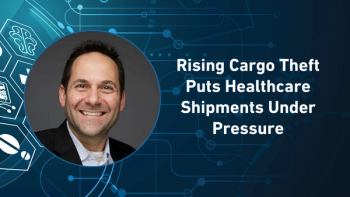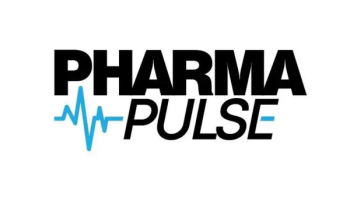
Balancing AI Ambition With Cost Pressures in Pharma
In the third part of his Pharma Commerce video interview, Philip Sclafani, PwC's pharmaceutical and life sciences lead, explains how pharma companies can strategically evaluate AI investments across functions like R&D, pharmacovigilance, and supply chain, ensuring early automation gains and long-term value without intensifying short-term financial strain.
In a video interview with Pharma Commerce, Philip Sclafani, PwC's pharmaceutical and life sciences lead, he describes how the One Big Beautiful Bill Act (OBBBA) is expected to significantly influence prescription drug spending by reshaping access and reimbursement within Medicaid, certain Medicare segments, and ACA exchange plans. The OBBBA introduces pressure on pharmaceutical revenues, particularly by limiting coverage for high-cost drugs in publicly funded markets. This could reduce patient access to specialty medications and diminish pharma sales in those sectors.
Simultaneously, broader market forces are also impacting prescription drug trends. On the private commercial insurance side, cost inflators like the rapid growth of GLP-1s and behavioral health treatments are emerging, while biosimilars act as deflators. The intersection of these trends—OBBBA and private market shifts—presents a complex environment for pharmaceutical companies.
To mitigate financial risks and preserve innovation, pharma firms are being pushed to accelerate R&D investment and pursue mergers and acquisitions (M&A) that bring in near-term revenue and long-term pipeline potential. There’s also growing interest in global licensing deals, including accessing drug pipelines from China for US or ex-China markets.
At the operational level, companies are responding to tighter margins by improving efficiency—through digitization, AI integration, and reevaluating commercial spend, such as Salesforce deployment and direct-to-consumer marketing.
Overall, Sclafani emphasizes that OBBBA is just one factor within a larger industry shift, and successful pharma companies will need to respond holistically—balancing cost containment, innovation, and strategic partnerships to adapt to this evolving landscape.
He also comments on balancing the demand for innovation with increasing payer pressure to control costs; the role biosimilars play in long-term cost containment strategies; operational and pricing strategies pharma executives should prioritize in order to stay competitive while ensuring patient access and affordability; and much more.
A transcript of his conversation with PC can be found below.
PC: PwC’s “Behind the Numbers 2026” report notes that AI could initially drive up medical expenses, despite its potential for long-term efficiencies. How should pharma companies evaluate AI investments to ensure they deliver measurable value without exacerbating short-term cost pressures?
Sclafani: It's an interesting question as AI is rolled out. I'll say I'm usually somebody who believes healthcare in the US moves at a glacial pace, and we've seen these fads before, like everything was going to be on the blockchain 10 years ago, and there's no more blockchain conversations going on really. AI has definitely come and made a meaningful impact in a very short time here, and we do see more coming. I think within that, I think about it in maybe three or so buckets.
I think there are probably easy things for a CFO or leadership team to green light doing, so the repetitive tasks that a pharma company does, pulling data from portals and data sources, or I have to pull this invoice from 50 different states ongoing. Things like that make a lot of sense to put into, at the very least, automation, but in a lot of cases, AI to drive those easy cost savings and efficiency plays. We see a lot of those moving forward.
I think there are very big scale plays we see pharma companies doing. Drug safety and pharmacovigilance is a great example. There are reports that come into a company, or they become aware of through all the different monitoring channels they have. And previously, somebody would go in and write up a report and all of that that's going to be sent to the FDA.
Now, we see AI and GenAI going in and reading that information and doing a lot of the drafting, and there's still a human looking at it and approving all of that, but a lot of the legwork is being done in tasks like that. We certainly continue to see a lot of that happening in R&D, finance, the commercial side of things, supply chain. All of that is usually valuable. I think there is a play then of, can we get better information and insights to make better decisions that should improve revenue or profitability down the line? Those are a little bit harder to green light. You have to spend the money now to get the AI capability, and it takes time to teach the model and learn and see where that goes to. We do see some of those coming in. R&D is a great example. I mean, anything that a pharma company can do to discover a better molecule, to get it into the lab and get it into patients quicker, and then into clinical trials faster and/or with a higher success rate, but even faster. Just being able to enroll clinical trials and get through that timeline is usually valuable. It's just adding more time and peak sales because you're on the clock with your IP and patent life. So we see some of those areas starting to come in.
The last piece that I'll say is probably more the leading edge and tougher is, how do I then position AI to offer more value services, support activities, to patients, providers, physicians that pharma interacts with? We see some easier use cases, like next best action, like, where do I send my sales rep? Or, we have this inbound request for a medical science liaison. We see some things in there. The next line of more AI interactions with patients and being able to better predict the needs of things evolving. It's tricky when you get into a very regulated space with HIPAA and protected health information. We start to see some of that come.
Maybe one last point here, and maybe not even a pharma example, but we do see AI in the near term as potentially a cost inflator for health plans and some others. Think about that almost as like AI is being used by hospitals and health systems to improve their revenue cycle management. As reimbursement is coming down from payers, or the One Big Beautiful Bill really impacts some hospitals and health systems, one of their responses will be to implement and use AI strategies to improve their revenue cycle management for how they bill, and that will maybe offset some of the cost decreases, but actually inflate costs in the near term. It's a little bit of a back and forth where you see AI being used. I think in regard to the long-term savings, we see a more efficient market, market wide, but in the near term, potentially an inflator, as folks spend money implementing the AI and then also focus on revenue-driving strategies across the sector.
Newsletter
Stay ahead in the life sciences industry with Pharmaceutical Commerce, the latest news, trends, and strategies in drug distribution, commercialization, and market access.




